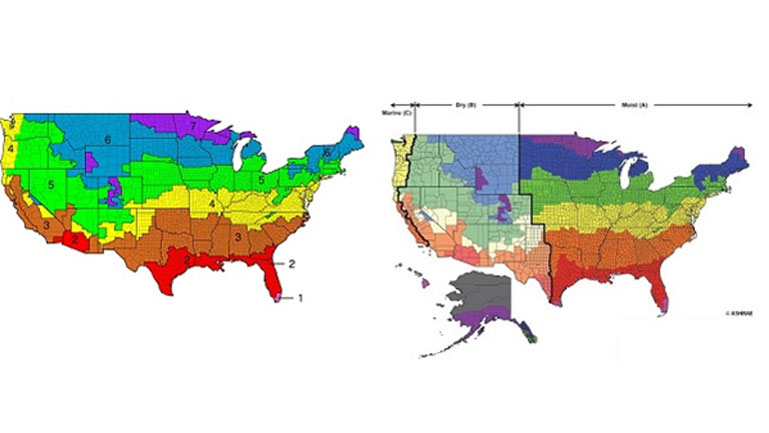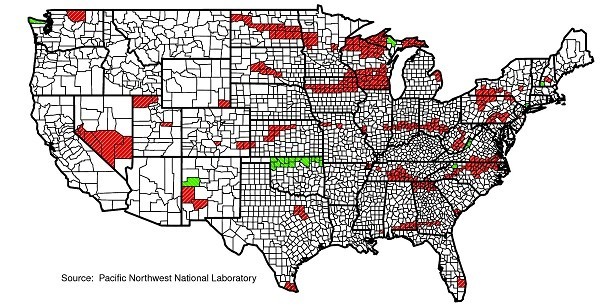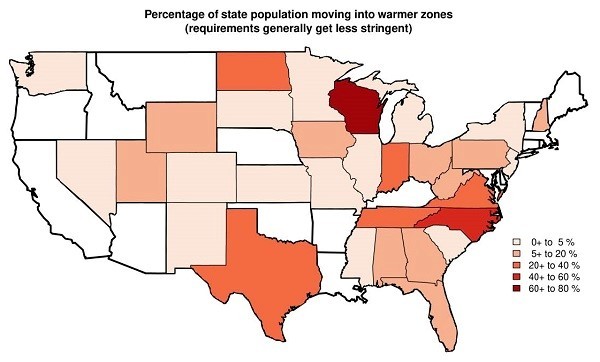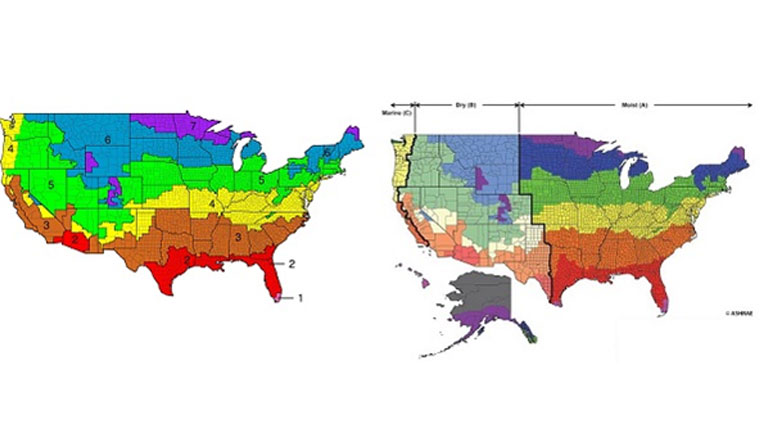Every three years, the International Code Council (ICC) updates the building codes in the International Energy Conservation Code (IECC). Changes to the IECC come from ICC staff, industry groups, government, and the general public. The IECC is the model energy code in the U.S., and updates to the 2021 edition were finalized by ICC in December 2020. One of the fundamental changes to the 2021 IECC was the designation of Climate Zones (CZ).
Climate zones are central to the IECC. Climate zones dictate many of the energy efficiency measures that a building must include, and they are especially relevant to the building envelope. Climate zones are defined at the county level and are based on weather factors like winter and summer temperatures along with humidity and rainfall (to define the "Dry" and "Marine" sub-climates). The climate zone map had not changed since the 2003 IECC.
However, with new research based on measured temperature data from over 4000 weather stations throughout North America over the last 25 years, the IECC designated changes to the CZ map for the first time in nearly 20 years. The outcome was that about 10% of counties in the U.S. were placed in a new CZ. In nearly all cases, the shift was to a warmer (lower) CZ, reflecting a general warming of the climate in those areas. The first set of maps below show the old CZs on the left and the new ones on the right. The shaded area across the west in the image on the right highlights the "dry" sub-climates. In most cases, the shift in CZ is relatively subtle.

While it can be difficult to distinguish substantial differences in the map above, the map below, by the Pacific Northwest National Lab (PNNL), makes it clearer which specific counties shifted to warmer (lower) CZs (red) and which shifted to cooler(higher) CZs (green).

It is important to notice that some of these changes cover highly populated, metropolitan areas and also areas of considerable construction activity. Examples of high population areas that changed CZs are:
· Dallas/Ft. Worth, TX (CZ3 to CZ2)
· Central Tennessee including Nashville (CZ4 to CZ3)
· Northern North Carolina (CZ4 to CZ3)
· Southern Wisconsin (CZ6 to CZ5)
The last map, also by PNNL, highlights the percentage of a state's population that is shifting to a warmer CZ. In TX, TN, NC, and WI, the fact that CZ shifts fell across population centers means a significant part of those state's populations will eventually have new homes (and commercial buildings) built under different CZ requirements.

When we consider what this means for compliance with the IECC, it is important to note that in previous versions of the IECC, building in a warmer climate usually meant less stringent requirements for insulation and air leakage, decreasing the overall cost of the insulation for the building. Offsetting the less stringent requirements for insulation and air leakage are requirements for cool roofs (white roofs) on commercial buildings that are often found in warmer climates (CZ 1-3).
However, this year, given the increases in insulation requirements for all CZs in the 2021 IECC [Link to residential IECC Blog], most of the perceived "benefits" pertaining to insulation associated with moving to a warmer CZ are mixed and not as easily associated with cost savings. For example, a home built in the Dallas/Ft. Worth area under the 2015 IECC (current TX code) would call for R-38 in the attic and R-20 in the walls. Under the 2021 IECC, now in CZ2 (rather than CZ3), the attic would require R-49, but the walls would require only R-13. In colder climates (CZ4 and above), the R-value increases the 2021 code tend to overshadow any potential monetary benefits from shifting CZs.
It is worth noting that none of these changes will take place until jurisdictions begin adopting and implementing the new codes outlined in the 2021 IECC. This process typically takes states and other jurisdictions 1-5 years, and you can use this website from the US Department of Energy to establish which building code is applied to your state.
The changes in the 2021 IECC were significant and wide ranging. For more information about the 2021 IECC, please visit our blogs reviewing the changes to the Residential and Commercial 2021 IECC.

